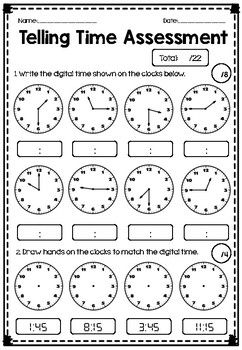Introduction
We often think of days, months, and years when measuring time. But have you ever wondered how many hours make up an entire year? Whether you’re planning for an event, calculating your work hours, or just curious, understanding how many hours in a year is more significant than it may seem.
This article will explore the answer to the question, “How many hours are in a year?” and discuss the factors that can influence this number. We’ll look at the standard year and leap years and why this calculation is more relevant to your daily life than you initially thought.
Time Measurement
Time is a concept that has fascinated humanity for centuries. From ancient civilizations to modern-day technology, we’ve developed complex systems to measure and divide it. The most common time units are seconds, minutes, hours, days, and years, which can be broken down even further.
Daily life typically measures time in hours, especially when scheduling activities, work, and leisure. But when you zoom out to a broader perspective, understanding the total number of hours a year can greatly impact how we organize and approach our lives.
How Many Hours Are in a Standard Year?
Let’s get right to the heart of the question. In a standard year, there are 365 days. Since we know that each day has 24 hours, the total number of hours in a regular year can be calculated as:
365 days×24 hours/day=8,760 hours365 \, \text{days} \times 24 \, \text{hours/day} = 8,760 \, \text{hours}365days×24hours/day=8,760hours
So, a standard year contains 8,760 hours.
This calculation is based on the assumption that each year has the typical number of 365 days. This is the most common year in our calendar system, the Gregorian calendar, which most of the world follows today.
Understanding Leap Years and Their Impact on Hours
Now that we’ve covered the standard year, let’s dive into a year that occurs once every four years — the leap year. A leap year happens to compensate for the fact that the Earth doesn’t complete its orbit around the sun in exactly 365 days. Instead, it takes approximately 365.2425 days.
An additional day is added to the calendar every four years to adjust for this, making it a 366-day year instead of the usual 365 days. This day is added to February, which has 29 days in a leap year instead of 28.
Since a leap year has 366 days, the total number of hours in a leap year can be calculated as:
366 days×24 hours/day=8,784 hours366 \, \text{days} \times 24 \, \text{hours/day} = 8,784 \, \text{hours}366days×24hours/day=8,784hours
Thus, a leap year has 8,784 hours, 24 hours more than a standard year.
Why Is It Important to Know the Number of Hours in a Year?
Knowing how many hours in a year is more than just a fun fact. This knowledge can have practical applications in several areas of life. Here are a few reasons why this calculation might be important:
1. Time Management
One of the most practical uses of knowing the number of hours in a year is time management. You can better plan your time by understanding the total hours available in a year. Whether you’re working toward personal goals, academic achievements, or professional success, knowing how many hours you have can help you stay focused and maximize your time.
2. Work Hours
Many people work hourly, and understanding how many hours in a year can help calculate annual earnings for those employees or freelancers. For example, if you know how many hours you work each week and how many weeks you work in a year, you can estimate your annual salary or income based on your hourly rate.
3. Productivity and Efficiency
Businesses and organizations may use the total hours in a year to set productivity targets. For instance, a company may set yearly goals for how many hours employees should be productive or how much work should be completed in a given time frame. This type of calculation is essential for determining project timelines and meeting deadlines.
4. Health and Wellness
Understanding the number of hours a year can also positively impact your health and wellness. By recognizing the number of hours a year, you can break down your health goals into manageable time segments, whether committing to exercise, sleeping better, or managing stress.
5. Financial Planning
For financial planners, calculating the hours in a year can help create long-term investment strategies. Time is a crucial factor in savings, investments, and retirement planning. Knowing the hours in a year can assist in budgeting and setting realistic goals for your financial future.
Other Ways to Calculate Time: Minutes, Seconds, and More
While the number of hours in a year is a great starting point, there are also many other ways to measure time. These different units can sometimes offer more detailed insights into the passage of time.
Minutes in a Year
To calculate the number of minutes in a standard year, we first need to multiply the number of hours (8,760) by the number of minutes in an hour (60):
8,760 hours/year×60 minutes/hour=525,600 minutes/year8,760 \, \text{hours/year} \times 60 \, \text{minutes/hour} = 525,600 \, \text{minutes/year}8,760hours/year×60minutes/hour=525,600minutes/year
Therefore, a standard year has 525,600 minutes.
Seconds in a Year
Next, we can calculate the number of seconds in a year. Since there are 60 seconds in a minute, we multiply the number of minutes in a year by 60:
525,600 minutes/year×60 seconds/minute=31,536,000 seconds/year525,600 \, \text{minutes/year} \times 60 \, \text{seconds/minute} = 31,536,000 \, \text{seconds/year}525,600minutes/year×60seconds/minute=31,536,000seconds/year
So, there are 31,536,000 seconds in a standard year.
For a leap year, these calculations would be slightly different, as we would need to account for the additional day (24 hours), giving us:
- Minutes: 527,040 minutes
- Seconds: 31,622,400 seconds
The Role of Time in Personal and Professional Life
Time is integral to nearly every aspect of our personal and professional lives. Here’s how understanding time can shape different areas:
1. Time for Family and Relationships
We all have 8,760 hours in a year (or 8,784 in a leap year), and how we spend those hours can greatly influence our relationships. Whether dedicating quality time to family, maintaining friendships, or pursuing a romantic relationship, how we allocate our time can affect our happiness and well-being.
2. Professional Development
In your career, time is often the most valuable resource. Many people are focused on advancing their skills, gaining experience, and excelling in their professional lives. Understanding how to use your time wisely can result in better performance, more opportunities for advancement, and increased job satisfaction.
3. Self-Care and Personal Growth
Setting aside time for self-care, hobbies, and personal development is crucial for mental and emotional well-being. The number of hours a year gives you a framework for understanding how much time you can allocate to these aspects of your life, ensuring that you don’t neglect your needs while pursuing other goals.
Conclusion
In conclusion, there are 8,760 hours in a standard year and 8,784 hours in a leap year. This simple calculation can profoundly impact how we approach time management, goal setting, and various aspects of our personal and professional lives.
By understanding how much time we have each year, we can make more informed decisions about allocating our hours for maximum productivity, health, and happiness. Whether you’re using time to manage your career, personal relationships, or personal development, knowing the total number of hours in a year helps you stay grounded and focused on what truly matters.
Frequently Asked Questions (FAQs)
1. Why is a leap year 366 days?
A leap year occurs every four years to account for Earth’s orbit around the sun, which takes approximately 365.25 days. Adding an extra day every four years keeps the calendar in sync with the Earth’s revolutions around the sun.
2. How many hours are in a leap year?
A leap year has 8,784 hours because it contains 366 days.
3. How do you calculate the number of hours in a year?
To calculate the number of hours a year, multiply the number of days by the number of hours a day. For a standard year, 365 days × 24 hours/day = 8,760 hours.
4. Is there a difference in the number of minutes and seconds in a leap year?
Yes, there is. A leap year has one extra day, so it has 527,040 minutes and 31,622,400 seconds, slightly more than a standard year.
5. How can knowing the number of hours in a year help with time management?
Knowing how many hours in a year helps you prioritize your time, set long-term goals, and make time for personal and professional pursuits.











